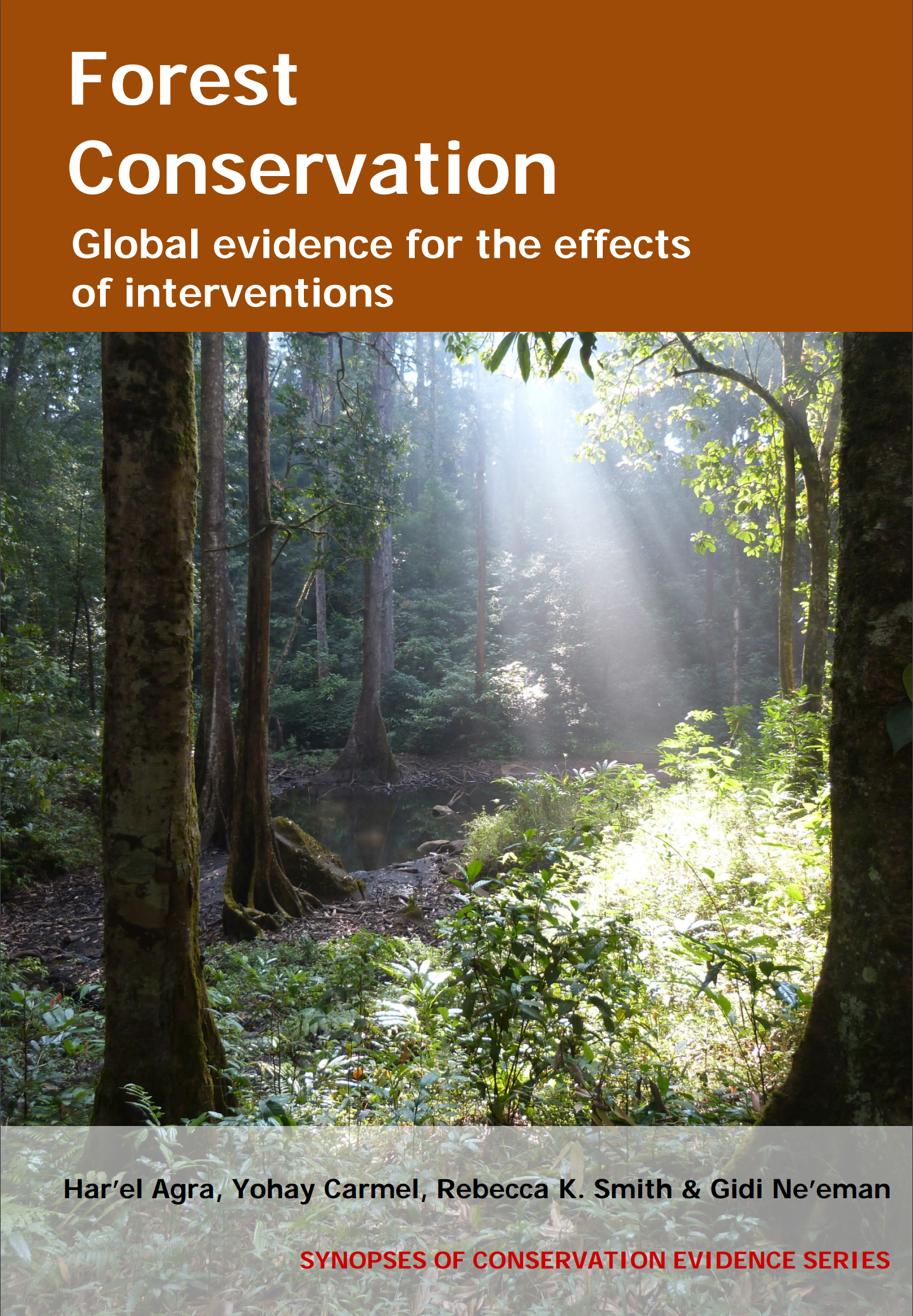Use partial retention harvesting instead of clearcutting
-
Overall effectiveness category Unknown effectiveness (limited evidence)
-
Number of studies: 3
View assessment score
Hide assessment score
How is the evidence assessed?
-
Effectiveness
5% -
Certainty
35% -
Harms
45%
Study locations
Supporting evidence from individual studies
A replicated study in 1999-2000 in boreal forest in Alberta, Canada (Frey et al. 2003) found that partial retention harvesting decreased the cover and root-sucker density of Populus spp. compared with clearcutting. Cover of Populus spp. (clearcutting: 9%; thinning: 3%) and density of Populus spp. root-suckers (stems/ha) (clearcutting: 74,800; thinning: 53,900) were higher in clearcut sites. Data were collected in August 2000 in twenty 2 x 2 m plots in each of three replicates of clearcutting (complete removal) and partial removal (50% of basal area removed) treatment units (10 ha). Treatments were applied during the winter of 1998-1999.
Study and other actions testedA replicated, controlled study in 1999-2007 in boreal mixed wood forest in Alberta, Canada (Gradowski et al. 2010) found that low logging intensity levels decreased young tree density compared with clearcutting. Young tree density for the dominant species trembling aspen Populus tremuloides and balsam poplar Populus balsamifera was higher in clearcutt plots (15,000/ha) than in 50% (7,000) and 75% tree area retention sites (3,000), and higher in 10% (12,000) than in 75% tree retention sites. In 20% retention sites, density was similar to all other retention levels (9,000). Each of five logging intensity levels: clearcutting (0%), 10%, 20%, 50% and 75% of the area retained were applied in nine 10 ha forest compartments. Regeneration of trembling aspen and balsam poplar was assessed using six 2 × 10 m plots in each compartment (total of 270 plots).
Study and other actions testedA replicated, randomized, controlled study in 1994-2005 in temperate coniferous woodland in British Columbia, Canada (Newsome et al. 2010) found that partial-cutting decreased the cover of understory conifers compared with clearcutting at one of two sites. At one site cover of tall (2-10 m) understory conifers was higher in clearcut (12%) than partial-cut plots (3-6%). Cover of other plants was similar between treatments: tall shrubs (clearcut: 19%; partial-cut: 13-15%), short (<2 m) shrubs (clearcut: 39%; partial-cut: 24-28%), short conifers (clearcut: 2%; partial-cut: 4-5%), herbs (clearcut: 37%; partial-cut: 36-41%) and mosses and lichens (clearcut: 6%; partial-cut: 12-22%). At a second site, cover of plant groups was similar between treatments: tall conifers (clearcut: 8%; partial-cut: 6-8%), short conifers (clearcut: 10%; partial-cutt: 10-14%), tall shrubs (clearcut: 12%; partial-cut: 3-4%), short shrubs (clearcut: 41%; partial-cut: 19-28%), herbs (clearcut: 23%; partial-cut: 21-22%) and mosses and lichens (clearcut: 6%; partial-cut: 13-19%). Data were collected in 2004-2005 in 16 subplots (200 m2) within each of four clearcut and eight partial cut (25-50% of basal area retained) treatment plots (1 ha) in each of two sites. Treatments were applied in 1994-1996.
Study and other actions tested
Where has this evidence come from?
List of journals searched by synopsis
All the journals searched for all synopses
This Action forms part of the Action Synopsis:
Forest Conservation
Forest Conservation - Published 2016
Forest synopsis





)_2023.JPG)














